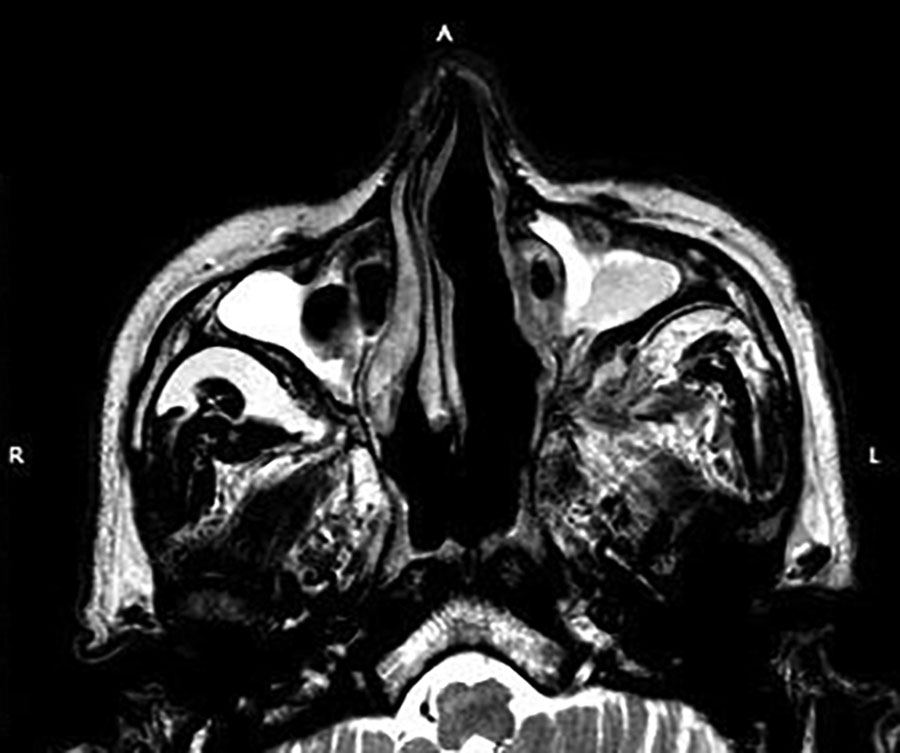Volume 28, Number 1—January 2022
Synopsis
Outbreak of Mucormycosis in Coronavirus Disease Patients, Pune, India
Figure 3

Figure 3. T2-weighted magnetic resonance imaging of the maxillary sinuses of a patient with mucormycosis after coronavirus disease, Pune, India, shows hypointense mucosal thickening bilaterally, more on the left side than the right. Near-complete occlusion of the sinus cavities and obliteration of left osteomeatal unit are seen. There is a mild deviation of the nasal septum with convexity toward the right side. There is mild soft tissue edema with altered signal abnormality involving the left pterygopalatine fossa extending to the left masticator space. L, left; R, right.
Page created: September 24, 2021
Page updated: December 20, 2021
Page reviewed: December 20, 2021
The conclusions, findings, and opinions expressed by authors contributing to this journal do not necessarily reflect the official position of the U.S. Department of Health and Human Services, the Public Health Service, the Centers for Disease Control and Prevention, or the authors' affiliated institutions. Use of trade names is for identification only and does not imply endorsement by any of the groups named above.